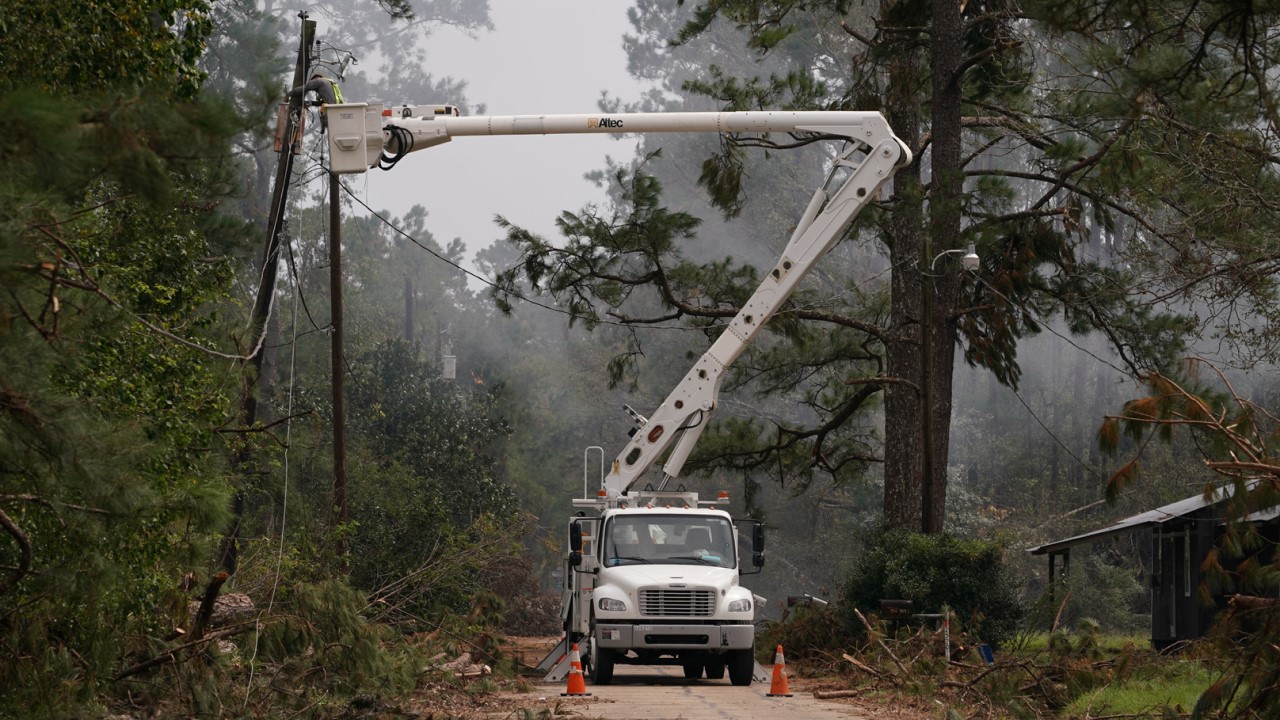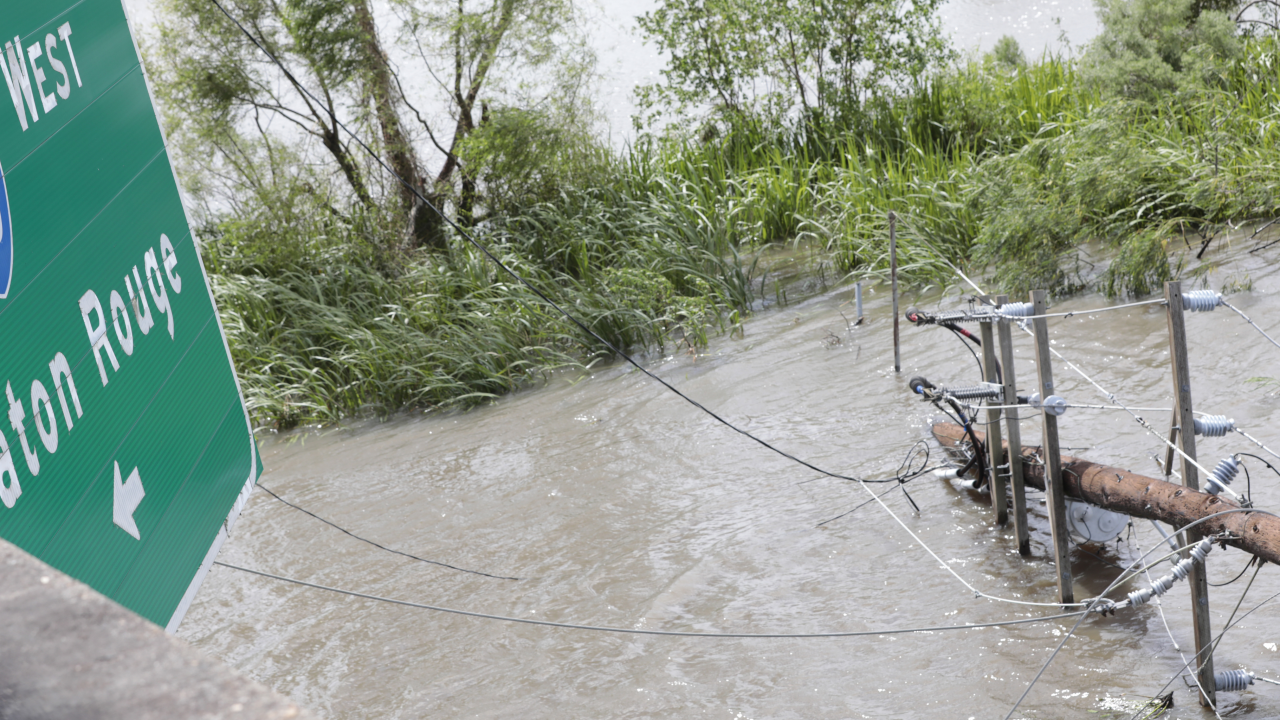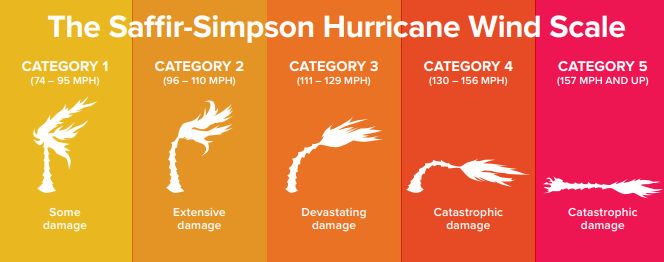
Preparation and careful planning can help
Hurricanes pose a serious threat both our customers and our system. Low-lying areas along the Gulf of Mexico are obviously vulnerable, but inland areas hundreds of miles from the coast can also suffer the high winds and flood damage of a hurricane. Preparation and careful planning can help you face the challenges hurricanes pose.
Facts you should know as part of your hurricane preparation
The eye of the storm is actually the center of the hurricane’s circulation, much like the hub of a wheel. Hurricane force winds precede the eye as it approaches, then winds may die down as the eye passes. The eye is often calm, and it may even be sunny during the day. It may seem like the storm is over. However, after the eye passes, the winds will change direction and quickly return to hurricane force.
Forecasts for tropical weather systems, like hurricanes or tropical storms, include a cone of uncertainty that shows the probable track of the storm's center. The cone of uncertainty does not show all areas expected to be affected by the storm. The storm still could cause heavy rain, wind and tornadoes in locations outside of the cone of uncertainty.
Flooding from hurricanes is a serious danger. Even if there are no high winds, the rain from widespread and torrential rains can be slow moving and stagnate over an area, pouring heavy rain onto an already saturated area.
Hurricanes often lead to flooding. Learn more about flood preparation.

Excessive rain can trigger landslides or mudslides, especially in mountainous regions. Flash flooding can occur due to intense rainfall. Flooding on rivers and streams may persist for several days after the storm.
Tornadoes are often spawned by hurricanes and are especially dangerous.
You should remain indoors at all times during a hurricane.
Prepare now for severe weather that may come your way.
Prepare your home
Whether you shelter in place or evacuate, your home will need some simple preparation to help protect it from hurricanes and their aftermath. Government and relief agencies all recommend the following:
-
Cover all of your home’s windows with plywood or permanent hurricane shutters to protect your windows from high winds and flying debris. You can pre-cut the plywood in fair weather and store it off the ground in a shed, crawl space or attic until needed.
-
Trimming trees and shrubs away from your house helps make them more wind resistant and lessens the likelihood of them damaging your house.
-
Keep gutters and drainpipes unclogged and clear of debris.
-
Bring in all outdoor furniture, decorations, garbage cans and anything else that can be blown away by the high winds.
-
Turn off utilities as instructed. Otherwise, turn the refrigerator thermostat to its coldest setting and keep its doors closed.
-
Turn off propane tanks if your home uses them.
-
The water supply will be unusable for a period of time following a hurricane. You will need a supply of water for sanitary purposes such as cleaning and flushing toilets. Fill the bathtub and other large containers with water. This water is not for drinking; you should have a supply of bottled water for drinking and cooking in your basic supplies kit.
After the storm
After the storm passes, your community is going to be in disarray for some time. Local authorities may not permit reentry to the affected areas until they have first made it reasonably safe to return. Flooding and debris may still be in the area, so use caution. Don’t drive through running or standing water. Avoid bridges and roads that are obviously damaged or washed out. Do not allow children to play in flooded areas. They may drown or be injured in areas that appear to be safe.
If someone needs to be rescued, call professionals with the right equipment to help. People have been killed and injured trying to rescue others in flooded areas.
Stay away from standing water. It may be electrically charged from underground or downed power lines.
When you return home
-
Remember, your house may have serious damage. Only enter if safe to do so.
-
If your home flooded during the storm, you may need to take special actions before electric service can be restored. Learn more in this quick video.
-
Use a flashlight to check for damage around your home. Never use candles, matches or other open flame.
-
Check to see that the electric, gas and water services are not damaged. Have licensed professionals check gas, water and electrical lines and appliances for damage. If you find or suspect damaged gas or power lines, call Entergy at 1-800-ENTERGY (1-800-368-3749) to report them.
-
Use tap water for drinking and cooking only when local officials say it is safe to do so.
Terms to know
Hurricane Watch: A hurricane watch means a hurricane is possible in your area within 36 hours. Be prepared to evacuate. Monitor local radio and television news outlets or listen to NOAA weather radio for the latest developments.
Hurricane Warning: A hurricane warning is when a hurricane is expected in your area. You should leave the area if local authorities advise you to evacuate.
Short-term watches and warnings: These warnings provide detailed information on specific hurricane threats, such as floods and tornadoes.
How hurricane strength is measured

Hurricane strength is measured scientifically on the Saffir-Simpson scale, based on factors such as measured wind speed, water temperature under the hurricane and other weather and geological factors. The Saffir-Simpson scale rates hurricane intensity on an increasing scale of Category 1 to 5. Local officials rely on the assessment of the Saffir-Simpson scale and other official assessments in determining emergency response plans and when ordering evacuations.
Source: National Oceanic and Atmospheric Administration.
Call 1-800-9OUTAGE (1-800-968-8243) to report downed power lines
